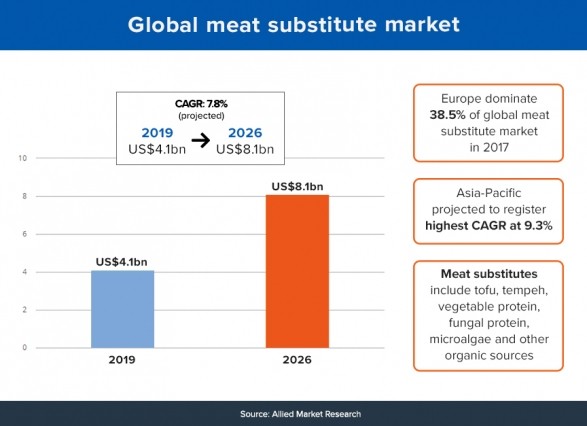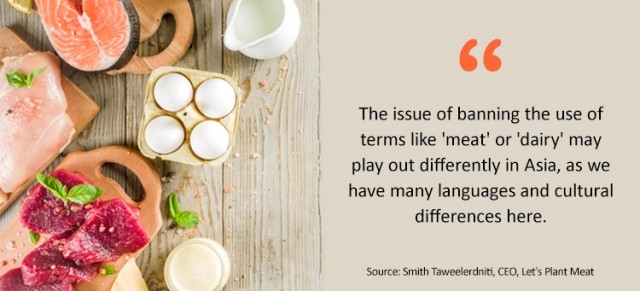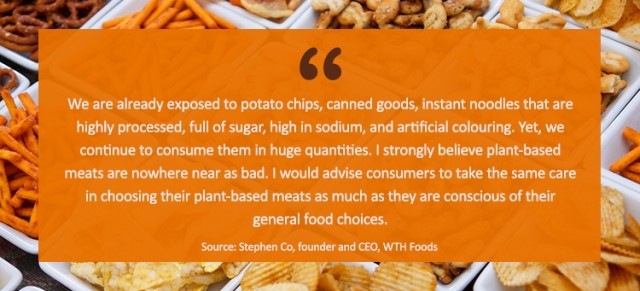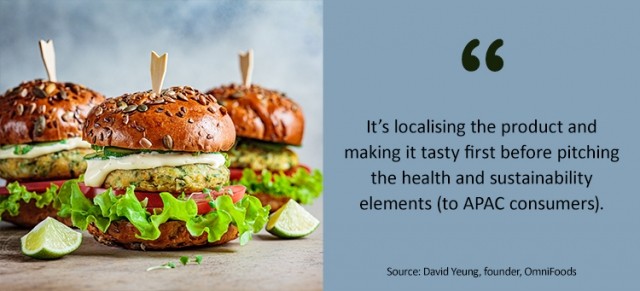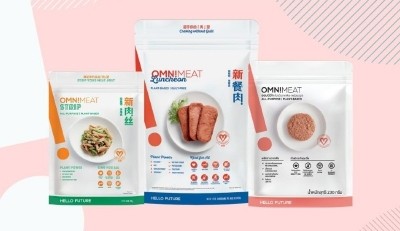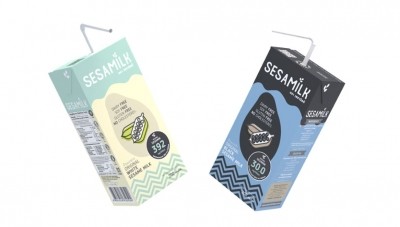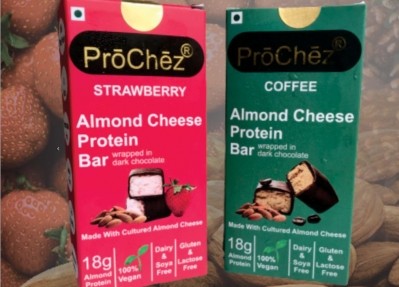FNA DEEP DIVE: Plant-Based Products
Mainstream hurdles: APAC plant-based firms highlight cost, labels and health concerns as the biggest challenges
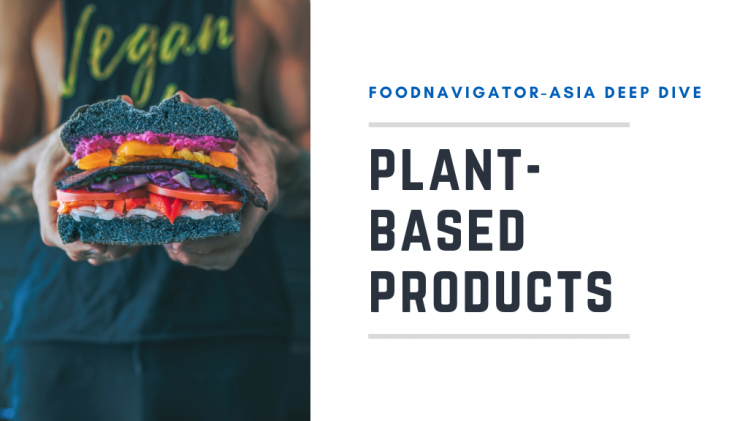
So in this episode of the FNA Deep Dive, we take a closer look at these and the how regional plant-based companies and the overall industry is responding to these challenges.
The global plant-based market is expected to continue seeing rapid growth to hit US$8.1bn by 2026 with a CAGR of 7.8%, and within this market analysts have predicted that the APAC region will see the highest growth at 9.3% CAGR.
Although big things are expected for plant-based in Asia, especially based on such enormous growth projections, there are still multiple barriers that stand in the way of the sector becoming truly mainstream in this region, one of the most significant being cost and pricing concerns.
“Product pricing and affordability is very important to gaining widespread consumer acceptance, especially [in places like] South East Asia,” Thailand-based plant-based meat firm Let’s Plant Meat CEO Smith Taweelerdniti told FoodNaviagtor-Asia.
“Many plant-based products in Asia today are shipped here all the way from western countries like the United States, and because demand is not yet that high, volumes are not that large so shipping costs are high, making the product expensive.
“In addition, traditional meat and dairy industries are able to sell at lower prices as they have the volumes and the support of government and retailers – demand is higher and they can sell faster, so they only need to be shipped as chilled products even if the shelf life is only seven to eight days.
“Plant-based products don’t have this option as the demand is lower and won’t move off the shelves as fast, so has to be shipped in a frozen form which is more expensive.”
Let’s Plant Meat has developed a plant-based burger patty from local ingredients that is priced at half the retail price of the Beyond burger patty in Thailand, precisely with this cost issue in mind.
Watch the video below to see more of Taweelerdniti’s insights.
Omnifoods Founder David Yeung concurred with Taweelerdniti, emphasising that production location is a key factor here. For this reason, Omnifoods plant-based meat brand Omnimeat manufactures its products in Thailand, even though its R&D is in Canada.
“Most plant-based food products available in APAC have production in US or Europe, adding up labour and transportation costs,” said Yeung.
“The logistics and labour costs in Thailand is going to be lower than the US, so that also means that it is savings that we can transfer to end consumers.”
Mycoprotein meat-free product giant Quorn on the other hand believes that as time passes and technology matures, cost will come down and normalise eventually.
“The high costs of plant-based and meat-free products are typically generalised by the public who are introduced to many new products from start-ups. There are many new players in the meat-free space, they have not reach industrial scale yet, so they have to address the cost challenges,” Quorn parent company Monde Nissin’s Director of Science and Technology Andy Kusomo said.
“Quorn has been around for the past 15 years, and we are quite mature in terms of our technology, manufacturing, and R&D [so] for a company like us and other larger companies, cost is already feasible.”
Indeed, in a relatively more mature Asian market for plant-based products like Singapore, a pack of two Quorn vegan burger patties goes for around S$7 (US$5.21) on Redmart, also roughly half the price of Beyond burger patties which is S$12.50 (US$9.30) for two patties.
Plant-based labelling debate
Although the debate about plant-based product labelling and whether the industry should be able to use terms such as ‘meat’, ‘dairy’, ‘sausages’, ‘burgers’, ‘cheese’ and more have been raging on for a while in places like the United States and Canada, this has recently picked up a lot of steam in Asia too, particularly in India.
The Food Safety and Standards Authority India (FSSAI) recently proposed a ban on all ‘dairy’ or related terms for plant-based products, citing fears of consumer confusion.
“We believe that the draft notification proposing to prohibit the use of dairy terms [for] plant-based products is against the interest of a young industry with major promise[and is] inconsistent with common-sense regulations already in place for other foods such as peanut butter, cocoa butter, and coconut milk,” Good Food Institute (GFI) India Managing Director Varun Deshpande told us.
“[Our research has shown that] a majority (70%+) of Indians across large cities and smaller towns, whether they are consumers of plant-based dairy or not, are able to successfully identify the source of cow's milk vs plant-based milks (whether from soy, almond, or other sources).”
Deshpande feared that if these regulations were passed, plant-based producers would be impacted in terms of costs for label changes and marketing, and the industry would suffer a blow to positive growth.
“[Fair] labelling is critical to creating a level playing field for the growth of any new industry, and we believe that prohibiting the use of dairy terms may stifle this growth, to the detriment of producers and consumer welfare,” he said.
This was echoed by local dairy firm Epigamia which also produces plant-based products, saying that consumers are not so easily confused.
“[Traditionally] used non-dairy products such as almond milk, peanut butter, and coconut milk [have] successfully established their identity in the mind of consumers and should be categorized as the per generic use case,” said Epigamia CEO Rohan Mirchandani.
“Furthermore, it is important to note that many consumers are resorting to alternatives on the back of health reasons or the fact that they can’t digest dairy and we would need to cue the generic consumption category for these alternatives.”
Over in Australia, the debate has been ongoing for a while longer but recently Agriculture Minister David Littleproud held a roundtable on the issue – a process that local industry representative group Food Frontier has criticised as having ‘unbalanced representation’.
“The [department has] reneged on the Ministers commitment to have a representative of each of the meat, dairy, egg, manufacturing, retail and alternative protein sectors, by expanding the group to include two voices each from the meat and dairy sectors,” said Food Frontier Director of Policy and Government Relations Sam Lawrence.
“The result of this unbalanced representation is that any outcome from the working group process cannot be deemed balanced or credible.”
Lawrence also highlighted research data saying that 91% of Australians and 94% of New Zealanders have ‘never mistakenly purchased a plant-based product thinking it was its animal-based counterpart and vice versa’, and stressed that the Ministerial Forum on Food Regulation had already made it clear – twice - that regulatory change was not necessary.
“Food Frontier will continue to pursue an evidence-based discussion. Thus far, no evidence has been presented indicating there is an issue to be addressed – underlining why Food Frontier must continue to question the purpose, and motivation for, the working group,” he said.
There may yet be hope for Asia though – according to Taweelerdniti, the size and volume of different local cultures and acceptance could prevent this from evolving into as big an issue as in the west.
“The issue of banning the use of terms like ‘meat’ or ‘dairy’ may play out differently in Asia, as we have many languages and cultural differences here,” he said.
Processing and health concerns
Health and nutritional doubts are another major area of rising concern amongst APAC consumers, particularly for plant-based meat products, where a lot of debate has been raised over the levels of processing and use of additives, sodium and other much-feared ingredients.
According to Yeung, the issue here is how the comparison is made – comparing plant-based meats to processed meats like bacon, spam and sausages, there is no doubt about the benefits as processed meats tend to contain nitrates and nitrites which are carcinogenic.
“Alternative meats are definitely healthier than processed meats, which has been proven to be bad for health, causes heart disease and increase risk of cancer,” he said.
“What we are recommending here is not an entirely plant-based diet – we’re actually targeting plant-based meats at the majority of the population who are meat eaters, trying to shift them to replace meat with meat alternatives, which are healthier and more sustainable.
“The healthiest diet would still be one containing various whole and organic foods, but even this may not be the best scenario in terms of taste and affordability for the consumer.”
Taweelerdniti added that consumers also need to take a step back and look at how ‘healthy’ traditional meat is as well.
“Plant-based meat is often assumed to be highly-processed and unhealthy due to the ingredients stated on the label - but what about regular meat? Consumers don’t know exactly what food the cows or pigs they are eating have consumed, or if antibiotics or hormones have been used on these, but these are not stated on the label, so questions are rarely asked,” he said.
Sustainability not a great selling point in Asia
In addition to these, the plant-based industry in APAC also has to deal with a marketing challenge, especially in Asia, where using sustainability as a driver simply does not cut it.
“In Chinese culture, there is a firm belief in the ‘balance’ in the diet, so both meat and vegetables are needed as part of this balance,” China-based plant-based venture firm Dao Foods Founder Tao Zhang said.
“The Chinese palate is particularly discerning, and consumers are not going to compromise on food for the sake of environmental or welfare reasons – it’s simply not that high on their priority list.”
On the other hand, Phlippines-based Worth The Health (WTH) Foods concurred, but opined that sustainability concerns seem to be on the rise in Asia.
“Asia is indeed lagging in terms of the sustainability trend - Taste, price, and value for money are still key to reaching a mainstream audience here,” said WTH Foods CEO Stephen Co.
“However, in recent years, and especially during this pandemic year, we are observing a growing consumer demand for products that are health conscious and environmentally responsible. Asian consumers are beginning to add health and environment when they consider a product's value.”
Other technical challenges
As for actual product manufacturing, some of the biggest challenges faced revolve around product colour and, of course, taste.
According to Chr. Hansen Natural Colours Division Director of Global Marketing Jerome Raudin, colour is a major challenge in the industry as plant-based proteins such as soy, pea or almonds are usually an unappealing gray-brown, not milky white or red-brown as associated with milk or meat.
“Without colour, plant proteins don’t look tasty because [the foods would] differ significantly from the animal-based products manufacturers try to imitate. Therefore, the use of colour is essential to meet customer expectations,” he said.
As for taste, plant proteins often have flavour off-notes – e.g. pea protein has a vegetal ‘green’ flavour, and soy a ‘beany’ taste – which often need masking. The process of extracting plant proteins also tends to result in increased sodium content in the final products.
“Manufacturers must also find ways to conceal undesirable off-flavours and create umami, meaty taste profiles that appeal to consumers, without further increasing sodium in plant-based goods [as] concerns rise about high salt levels, [which is another challenge in itself,” added DSM Director of Business Development & innovation Gilbert Verschelling.
Big brand presence
Despite all these challenges, confidence in the future of plant-based products is still high within the industry, as evidenced by the rising numbers of big F&B brand names entering the category.
One example is Asahi which launched a plant-based version of its popular lactic acid drink Calpis, replacing dairy milk with soy milk in April this year.
Kristin Chiu, public relations manager at Asahi Group Holdings said the company was hoping to sell 500,000 boxes of the drink this year. Though sales have been hit by COVID-19, she maintained that consumer interest and feedback has been positive.
“Although the sales are lower than our projection, we still get lots of positive feedback from consumers - Some mentioned that it’s the product they have been waiting for,” she told us.
“For Asahi, Green Calpis is a product with not only economic value but also social value. [It was] based on growing health concerns about dairy in Japan, and at the same time looks to tap into the growing plant-based milk market.”
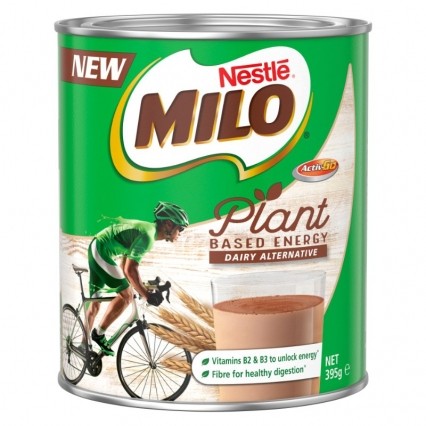
Another big name to have made waves in the industry is Nestle – the firm launched a plant-based version of Milo in Australia earlier this year.
“The milk powder has been removed and replaced with soy protein and oat flour - so [in terms of taste] there is a slight difference, however we believe [that Milo’s traditional] delicious choc malt taste remains,” Nestle Australia Business Manager Dairy Anna Stewart told us.
“We know people are looking for dairy alternatives and more plant based products [here in Australia].”
Nestle China also announced that it would be setting up a local plant-based facility to cope with rising local demand for plant-based foods.
“[This] will be our first [facility for a] plant-based category production line in Asia,” the firm told us.
“Given that vegetarian meat has always been a conventional food in China, we are confident that it will be much easier for local consumers to accept the concept of plant-based foods, with greater prospects in China than in other countries.”
Looking to the future
An expert panel at the Plant-Based Innovation session of our recent Growth Asia 2020 series has already concluded that the best way forward for the plant-based industry here is to focus on the actual product taste, price and nutrition.
“In India for example, and likely elsewhere too, the early adapter cohorts were thinking about the animals and the planet, but now we’re past that early stage and the focus needs to be on taste, price and nutrition,” said Deshpande.
“We need to appeal to the mainstream, wider consumers and the only way to do this is if the products cost the same or less and taste the same or better – otherwise, no one is going to care whether the ingredients used are plant-based or not.”
Yeung concurred, stressing again that in Asia, taste is very much the top factor no matter the type of food.
“Asians have sharp taste buds and are very picky. We have to ensure that the food we produce is localised to reach out to the masses - Once the product and price point appeals to the masses, then the sustainable element can be pitched,” he said.
So the message is clear: Although the challenges facing the plant-based industry are very real, if companies wish for their products to reach mainstream status in the APAC region and especially in Asia, the only way forward is to focus on creating good products that are healthy, affordable and still tasty.
